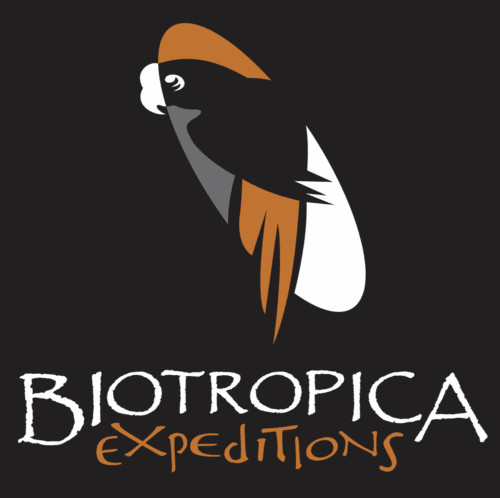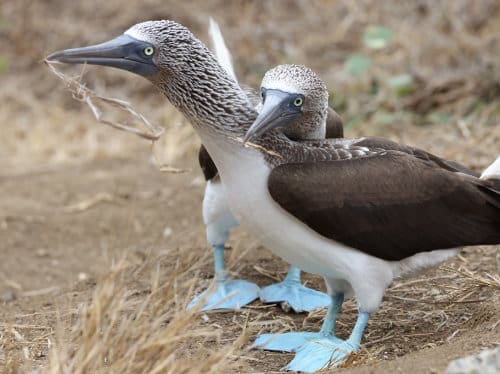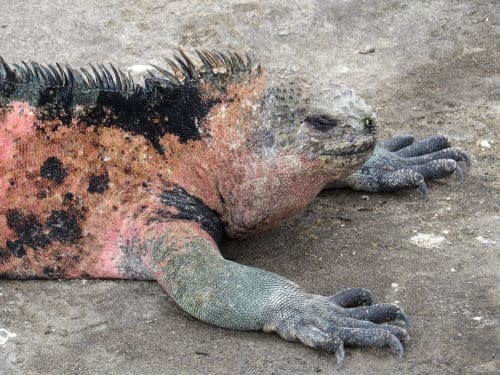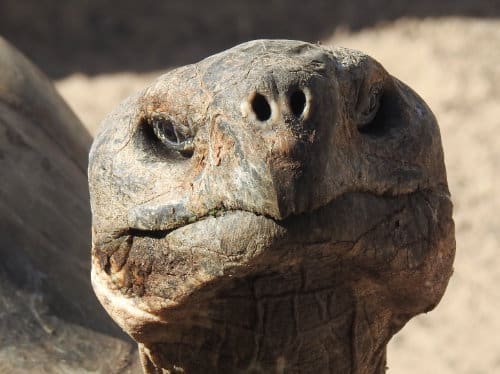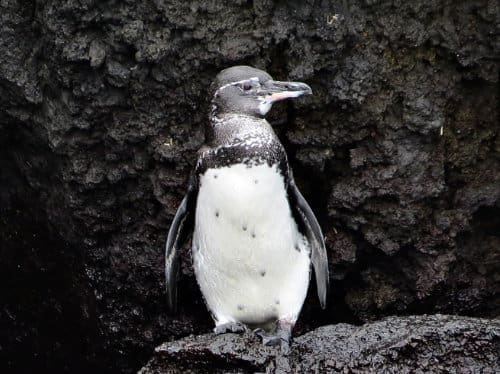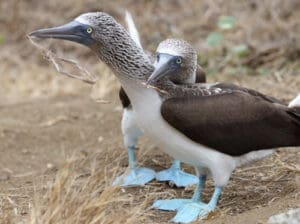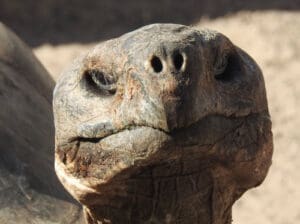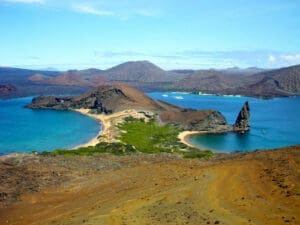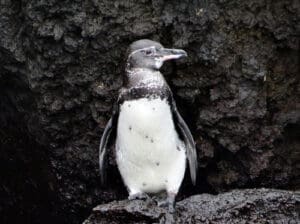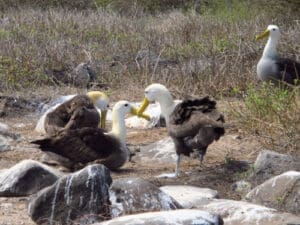Unveiling Evolution: A Galapagos Odyssey
Tour the Galapagos on this Western Island Cruise8-days / 7-nights
$5,400 per person/ double occupancy
Santa Cruz – Rabida – Isabela – Fernandina – Santiago – Bartolome
Step into a world where history, nature, and science intermingle – the Galapagos Islands. Born from volcanic forces over 5 million years ago, these isles hold a mesmerizing tale that Mother Nature continues to narrate to this day.
Our sea voyage unveils endemism – species found only in Ecuador’s largest national park. Sail between islands to witness life’s intricate tapestry: Giant Tortoises, Marine Iguanas, Sea Turtles, Blue-footed Boobies, Galapagos Penguins and more. Let Biotropica Expeditions guide you through this odyssey around the Western Islands of the Galapagos archipelago.
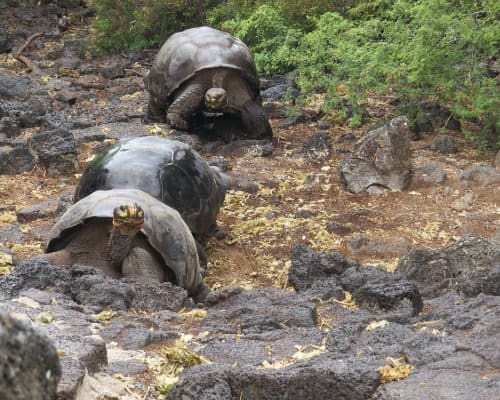
Galapagos Tortoises | ©Norby Lopez Granda
Day 1 – Arrive in the Galapagos
An introduction to Santa Cruz Island.
Our journey commences at either Quito or Guayaquil International Airport where Norby and Susy will help navigate the requirements for your first leg of travel to Baltra Island. With your professional guides in tow, the trip to Puerto Ayora, on Santa Cruz Island, will be a breeze.
Once we arrive, wildlife will be our focal point on Santa Cruz – Darwin’s finches and Giant Tortoises taking center stage. They are joined by Galapagos mockingbirds, brilliant Vermilion Flycatchers, and elegant water birds like herons, egrets, ducks, and stilts.
Puerto Ayora blends urban vitality with these untamed landscapes. Amongst the modern amenities are ATMs, souvenirs, restaurants, bars, and nightlife.
In the heart of the Puero Ayora, we will visit the Charles Darwin Research Station, home to young and adult tortoises, each bearing a unique story.
Day 1 of our tour unveils just a fragment of Galapagos’ magic, preparing us for the adventure ahead.
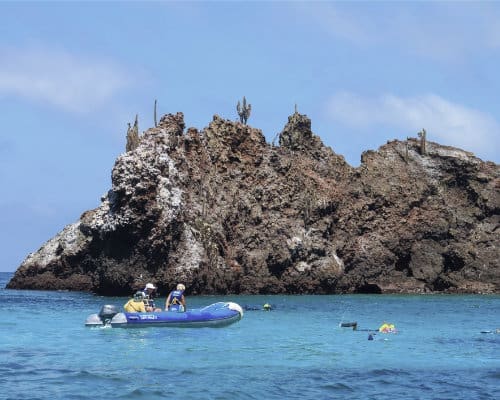
Snorkeling in the Galapagos | ©Cachalote Explorer
Day 2 – Secluded Isles
Visit the solitary islands, Sombrero Chino and Rabida.
Let’s begin day 2 with an exploration of the unique offerings of Chinese Hat Island.
The island’s crescent-shaped beach is our starting point for a leisurely 400-meter trail, offering fantastic views along the way. Watch American oystercatchers in action, spot marine iguanas and lava lizards, and catch glimpses of Sally Lightfoot crabs adorning the shores.
Prepare to dip into the cove’s crystal-clear waters, where swimming and snorkeling reveal an underwater world brimming with life. Whitetip reef sharks and colorful tropical fish may just be your companions on this aquatic journey. Also, keep an eye out for a pint-sized penguin colony that calls this place home.
Then, we set course for Rabida Island. This small gem boasts a distinct reddish hue due to its iron-rich volcanic soil. With excellent snorkeling opportunities, Rabida is a hotspot for nature enthusiasts.
Witness the intricate tapestry of life that thrives in the island’s unique arid, coastal habitat. Here, you’ll encounter a sea lion colony, Darwin’s finches, and the lively Galapagos mockingbirds.
Rabida’s coastline is also a nesting site for brown pelicans, a seasonal spectacle that adds to the island’s allure. Dive into the waters, where underwater wonders await your discovery.
Day 2 invites you to experience Chinese Hat Island’s natural wonders and Rabida’s distinct charm. Join us as we explore these captivating destinations, where every moment offers a new encounter with the fascinating world of the Galapagos Islands.
Overnight at hotel in Puerto Ayora.
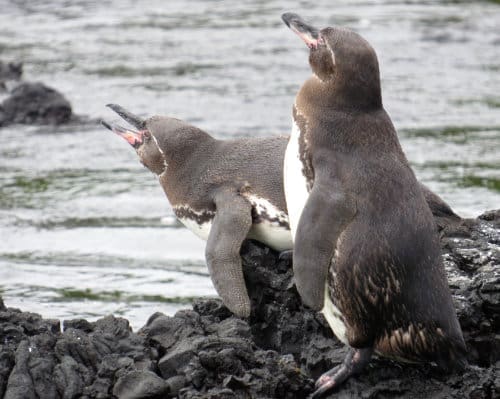
Galapagos Penguins | ©Norby Lopez Granda
Day 3 – Isabela: Puerto Villamil & Sierra Negra
Experience Isabela Island’s volcanic might.
We will greet the morning on Isabela Island, the archipelago’s western wonder. This island is a masterwork of six distinct shield volcanoes – Ecuador, Wolf, Darwin, Alcedo, Sierra Negra, and Cerro Azul.
Against this backdrop of ancient volcanic landscapes, Nature’s drama unfolds. We will cross paths with Galapagos Penguins, Flightless Cormorants, Sea Turtles, and Marine Iguanas.
Puerto Villamil, the island’s charming port town, beckons with its white-sand beaches and brackish-water lagoons alive with pink flamingos, common stilts, and other avian wonders.
We might hike to Sierra Negra, a colossal caldera considered one of the world’s largest. This geological marvel spans 10 kilometers from north to south and 9 kilometers from east to west. Nature’s power comes alive here, a testament to the forces that shaped this awe-inspiring archipelago.
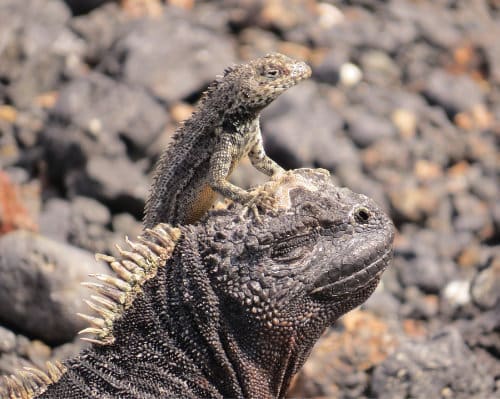
Galapagos Reptiles | ©Norby Lopez Granda
Day 4 – Punta Moreno & Elizabeth Bay
Voyage around Isabela Island, the Galapagos’ largest.
Today we will take a deeper journey into Isabela Island’s diverse tapestry. We’ll step into landscapes that seem otherworldly: extensive lava fields stretch for miles, lush highlands, and shorelines adorned with dense, unique red mangroves.
Moreno Point beckons with its more recent lava flow. We will endemic species that are pioneers in barren lava fields. Here, different lagoons play host to a variety of life, from graceful flamingos to Paint-billed Crake, White-cheeked Pintail, and Common Gallinules.
Next, we set our course for Elizabeth Bay, a haven for sea turtles. Surrounded by stands of red and black mangroves, this sanctuary offers a serene backdrop for Flightless Cormorant, Galapagos Penuin, and Lava Heron. In the water, we might observe another ‘flying’ species, marine rays.
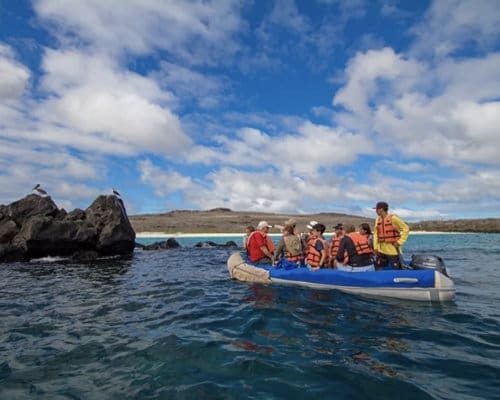
Dinghy Outing | ©Cachalote Explorer
Day 5 – Urbina Bay and Tagus cove
Voyage along Isabela’s West Coast
As a testament to the constant volcanic changes happening in the Galapagos, we will visit Urbina Bay. In 1954, a six kilometer stretch of coral reef raised 5 meters out of the ocean, stranding coral heads well above sea level. Today, we can observe the unique formation created by the rapidly deteriorating coral.
Further along Isabela’s western coast, we will have the opportunity to observe Giant Tortoise, land iguanas, and Flightless Cormorants before arriving to Tagus Cove.
An English warship is the namesake of Tagus Cove. It passed by the Galapagos Islands in 1814 looking for giant tortoises. This particular spot was a favorite site for pirates and whalers. Many of these early visitors wrote their names on the cliffs along the shore. The oldest include the Phoenix in 1836 and the Genie in 1846.
The nearby Darwin Lake is an excellent place for viewing land birds, including Darwin’s Ground and Tree Finches, Galapagos hawks, Yellow Warblers, Galapagos Flycatchers and, if we are lucky, the Woodpecker Finch. Also, we might also encounter land iguanas or giant tortoises.

Red-footed Booby | ©Cachalote Explorer
Day 6 – Fernandina Island
Our morning will begin at Punta Espinosa on Fernandina Island where dynamic geologic activity has exposed coral reefs and stands of red mangroves.
This location is a nesting site for marine iguanas. Mating activity commences around January and young will emerge around June. During the nesting season, snakes are commonly observed along the rocky beaches.
We will observe Galapagos penguins, Sea Lions, Sally Lightfoot Crabs, and, occasionally, Galapagos Hawks and land iguanas. The iconic Lava Cactus, a pioneer plant that survives with very little water, grows here.
We will continue our day at Punta Vicente Roca along Isabela’s northwest coastline. Water in this western location of the archipelago is cold, influenced by the upwelling of the Cromwell Current. This phenomenon creates abundant food supply for marine species. We hope to spot whales, dolphins, sea lions, Blue-footed and Nazca Boobies, pelicans and other marine birds feeding simultaneously.
The impressive geological formations provide nesting habitat for numerous birds including gulls, Storm Petrels, and Brown Noddy Terns.
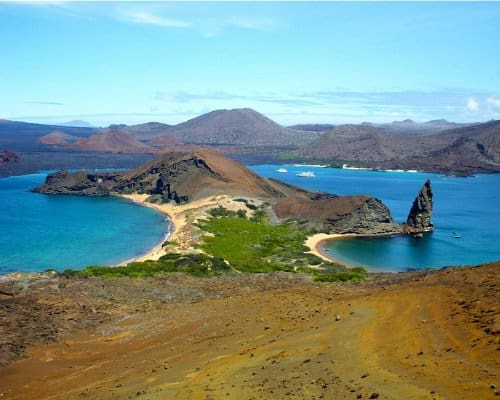
Bartoleme Island | ©Norby Lopez Granda
Day 7 – Santiago and Bartolme Islands
Compare and contrast two of the Galapagos’ diverse islands.
Santiago Island was formed by a large shield volcano. Today, it looks more like a mountain range with hills, valleys, and plenty of parasitic cones.
In the 1960’s, an Ecuadorian salt-mining business settled here. The island is now uninhabited. We will visit Puerto Egas, walking along the rocky shoreline and dark, sandy beach, and Sullivan Bay, admiring its fascinating lava formations.
Wildlife highlights include Galapagos Fur Seals, Galapagos Sea Lions, hawks, Darwin Finches, mockingbirds, and marine iguanas. Unique features include a rugged and well-eroded coastline made of tuff stone that contrasts with the dark black lava flow below.
Later in the day, we will visit Bartolome Island. This tiny island teems with fantastic landscapes and wildlife. It also happens to provide one of the most postcard-worthy views in the entire archipelago. We will have the opportunity to see Galapagos Penguins and snorkel along this island’s coastline.

Sea Lions | ©Cachalote Explorer
Day 8 – North Seymour and Baltra Islands
Enjoy your last day in the Galapagos… or extend with a land-based tour.
As we head back towards Baltra, we will first spend time a small but interesting island, North Seymour. Created from geological uplift, this island is covered prickly pear cactus and Palo Santo trees. Interesting features include white coral heads along the shoreline.
Wildlife highlights include a nesting colony of both Magnificent and Great Frigate Birds, graceful Swallow-tailed Gulls, and Blue-footed Boobies. Furthermore, there are also breeding colonies of Galapagos sea lions and marine iguanas. We are likely to spot land iguanas as well.
This afternoon, it is time to call an end to our wonderful adventure in the Galapagos. We will return to the airport at Baltra Island for our departure for the Ecuadorian mainland.
Alternatively, when you book this trip, select the land-based tour add-on for Santa Cruz Island. Your Galapagos Odyssey need not end here.
This Itinerary Includes
- Transfers in and out, from and to airport and lodges.
- Private land transportation according to itinerary.
- Meals and snacks.
- Beverages incljuding purified water, soft drinks, fruit juices, coffee & tea.
- Accommodation based on double occupancy
- Tour Leader – Bilingual Naturalist Guide equipped with quality spotting scope and years of experience.
- Local Indigenous guides at different lodges.
- All excursions described in program.
- Admission fees to parks and reserves described in program.
Not Included
- International airfares.
- Personal expenses like laundry or alcoholic drinks.
- Tips for guides, drivers, and staff.
- Travel or Medical insurance.
- Any other item not specified in what is included.
Frequently Asked Questions About Our Galapagos Tours
What should we expect on the yacht?
You will be staying in a double cabin, unless otherwise arranged. All meals and a welcome cocktail are included. All excursions are led by professional naturalist guides. You will have use of snorkel equipment, wetsuit, and kayaks. There will be a dinghy for taking us on excursions from the yacht to different islands.
Additional bottled beverages, alcoholic drinks, and other sundries are available for purchase on the yacht.
Is there a breakdown of costs and discounts for children?
Yes! We can provide a breakdown of costs for this trip and explain pricing for yournger family members.
Our trip using the Cacholote Explorer begins in either Quito or Guayaquil with an overnight stay in a hotel. This is to make it easy for you to plan to arrive the day prior to leaving for the Galapagos and allow ample time for travel delays that may occur.
Therefore, the tour for the cruise and the overnight stay in Quito or Guayaquil comes to $4,750.
The domestic flight from Quito or Guayaquil at 2023-2024 rates is $530 per person. This includes a 10kg carry-on bag and a 23-kg check bag.
There is also a National Park Entrance Fee of $100 and a Transit Control Card of $20.
On Isabela Island, there is a municipal dock fee of $10 per person.
Finally, Ecuador sales tax is 22%.
The total we will charge per adult, double occupancy, is $5,400.
Children 11 years old or younger will a 40% discount on the Galapagos Expedition portion of the trip. This discount is limited to one child per each adult on the trip.
Can we add days to this trip?
Yes! We can assist you in adding a land-based leg to this itinerary. When you make a reservation, there will be the option to select additional days on Santa Cruz Island. The lodge we use costs $285 per person, per night, double-occupancy. This rate includes accommodation in a double room, breakfast, dinner, and transportation from Baltra to the lodge, lodge to the Canal, and lodge to Puerto Ayora.
Also, if this trip is not the right length for you, we can discuss other Galapagos options, including different cruise and land-based options. Please reach out so that we can schedule a time to chat.
Do you offer other Galapagos tours?
Yes, we do offer other Galapagos tours.
If you would like to check other Galapagos Voyage options, we are happy to send you selected itineraries, with high quality and safe boats, just as exciting and rich in nature and wildlife experiences.
Which birds might we see on this tour?
Isabela Island
Galapagos Penguin, Lava Gulls, Gray Blue Heron, American Oystercatcher, Lava Heron, Small and Large Ground Finches, Yellow Warbler, Galapagos, Wedge rumped, Band rumped Storm Petrels and Galapagos Shearwaters.
For a more complete list, see this page on eBird.
Darwin Island
Little vermillion flycatcher, Dark billed Cuckoo, Galapagos Hawk, Galapagos Rail, Paint Billed Crake, Galapagos Flycatcher, Dark Billed Cuckoo, Galapagos Mocking bird, Short eared Owl, Small and Large Ground Finches, Yellow Warbler, Black Necked Stilt, White Chicked Pintail, Warbler Finch, Great Flamingo, Baird’s Sandpiper.
For a more complete list, see this page on AviBase.
Santa Cruz Island
Woodpecker Finch, Galapagos Rail, Paint Billed Crake, Dark Billed Cuckoo, Vegetarian Finch.
For a more complete list, see this page on eBird.
Rabida Island
Yellow Warbler, Galapagos Dove, Brown Pelican, Rabida Mockingbird, pintail ducks, Common Stilt, Great Flamingo, Blue-footed and Nazca Boobies.
For a more complete list, see this page on eBird.
Fernandina Island
Galapagos Hawks, Flightless Cormorant, Blue-footed Boobies, Galapagos Penguin.
For a more complete list, see this page on eBird.
Important Information for All of Our Tours
Cancelation Policy
Cancellation refunds and penalties are based on the following schedule:
- If cancellation is made 120 days or more before the tour departure date, a cancellation fee of $500 per person will be charged.
- If the client chooses to reserve another Biotropica Expeditions tour that will operate within the upcoming 12 months, the cancellation fee will be $100 per person.
- If cancellation is made fewer than 120 days before departure date, no refund is available.
This policy and fee schedule also apply to all trips or extensions.
We strongly recommend the purchase of trip cancellation insurance for your protection.
Visas and Passports
VISAS:
Visas are not required for U.S., Canadian or European citizens for entry into Ecuador for a stay of up to consecutive 90 days - three months.
PASSPORTS:
You will need a current passport with a minimum of 6 months remaining from its expiration date. We will ask you for this expiration date when you make your reservation.
Your passport will also need a minimum of two blank pages to allow for stamps in and out of Ecuador. If you begin your travel in any other country, be sure to allot more pages for the extra legs of your trip.
Furthermore, ff you need a new or renewed passport, please do so with anticipation. Currently, in the United States, even an expedited passport can take weeks to receive.
We recommend arriving to Ecuador with a color photocopy of the first two pages of your passport. Keep the photocopies in a safe place, so if your passport is lost you will have proof of identification.
The best source for current information about requirements for entering US Citizens entering Ecuador can be found on the US State Department website.
Health and Safety
ECUADOR
The US Centers for Disease Control provides general suggestions for health and vaccinations in regards to your trip to Ecuador. We highly recommend following their suggestions.
The US State Department maintains an updated travel advisory for Ecuador.
We highly recommend our US American clients signing up for the STEP program in order to receive updates from the US Embassy in Quito, Ecuador while traveling.
Additional Expenses
Your trip with Biotropica Expeditions includes most expenses. However, you will want to bring enough cash to cover personal expenses not included in the program. These might include taxi rides, laundry, special gratuities, meals on your own, and gifts to bring home.
It is difficult – if not impossible – to predict fuel costs at the time departure. Our prices are based upon the prevailing fuel rates upon itinerary publication. However, if the fuel rates increase significantly, it may be necessary to institute a fuel surcharge. We will provide as much guidance and warning as possible.
Money in Ecuador
The official currency of Ecuador is the US dollar.
Cash is most commonly used in rural areas and in some family run businesses in cities. We recommend bringing bills in small denominations as anything larger than a $20 can be difficult to spend.
ATM's are available in major cities. However, in smaller towns and rural areas, it can be difficult to find an ATM that works with all international bank cards. When in doubt, carry cash for extra purchases.
Most credit cards, especially MasterCard and VISA, are accepted in many establishments and businesses, especially in large cities like Quito, Cuenca, and Guayaquil.
Pre- and Post- Tours Options
Also, please consider some pre-tour or post-tour options.
Some participants may want to have the option of exploring Quito, the largest and best-preserved colonial center in Latin America, the world's very first UNESCO World Heritage city. With its impressive historical sites, ancient baroque art, museums and cradled in the foothills of Pichincha volcano, participants may choose to arrive earlier and experience a day or two here before beginning the program.
There are many activities in Quito around the colonial center, connecting with museums like the Alabado, which showcases an exquisite array of pre-Columbian ceramics, artifacts in beautiful displays; walking and exploring into numerous striking monasteries and cathedrals; the emblematic Plaza de la Independencia (independence plaza – the main square) from where the expedition that discovered the Amazon river marched to the Atlantic in 1542.
Above Quito is the Pichincha volcano, the gate to the Choco Cloud Forest, the recently added Biosphere Reserve in the Tropical Andes, with extraordinary hiking and birding opportunities, all within the city limits. The views of the imposing Eastern range of the Andes are spectacular.
Other options include the Botanical Garden of Quito with a rich collection and exhibit of native orchids and other species of plants, the Andes mountains in Antisana or Cotopaxi National Parks, exploring the foothills of these superb volcanoes and Paramo ecosystem.
Would you like to personalize Unveiling Evolution: A Galapagos Odyssey?
Would you like to personalize this tour? Maybe you want to add a day, visit a different site, make sure you see a certain bird? If so, please fill out this form.
If this is an urgent request, contact Norby and Susy directly via WhatsApp at +593 99 901 1505.
